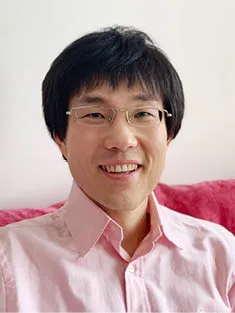Winner: 2020 Harrison-Meldola Memorial Prize
Sihai Yang
University of Manchester
For pioneering applications of X-ray and neutron scattering techniques to porous materials science and catalysis.

The sustainability of the supply of chemicals and feedstocks is a major problem faced by our society today. Plants utilise sunlight to convert atmospheric CO2 into organic carbon in biomass. Biomass is, therefore, an abundant carbon source if it can be converted to useful carbon feedstocks. However, such conversion is extremely challenging due to the complexity of lignocelluloses, and today, most biomass is treated as waste.
Dr Yang’s research group develops new porous materials as efficient catalysts to promote the conversion of biomass into olefins, aromatic feedstocks and liquid fuels. Porous materials containing nanosized cavities (1-20 nm), the walls of which are decorated with active sites, can form controllable platforms to study and re-define the chemistry and reactivity of molecules within the confined space. The group’s key research interest is to investigate the chemical processes underpinning their materials property using state-of-the-art X-ray and neutron scattering techniques.
Biography
Dr Sihai Yang was born and raised in Tianjin, China. During 2003-2007, he studied Chemistry at Peking University, where he worked on inorganic materials under the supervision of Dr Guobao Li and Professor Jianhua Lin. His undergraduate research has led to 14 publications. In 2007, Dr Yang moved to UK to carry out his PhD research in the University of Nottingham under the supervision of Professor Martin Schrӧder working on hydrogen storage in porous metal-organic frameworks. He gained his PhD in Inorganic Chemistry in 2011 and has been awarded an EPSRC PhD Plus Fellowship in 2011, a Leverhulme Trust Early Career Fellowship in 2011, and a Nottingham Research Fellowship in 2013 to conduct further independent research in porous materials.
In 2015, he joined the Department of Chemistry at the University of Manchester. Dr Sihai’s group currently works on the development of porous materials with nanosized cavities for applications in catalysis, biomass conversion, clean-air technology, energy storage, separation and conductivity, with a focus on the construction of “structure-activity” relationship by X-ray and neutron scattering techniques.
Science itself is teamwork.
Dr Sihai Yang
Q&A
Who or what has inspired you?
My supervisors from Peking University who taught me how to use diffraction data to determine the crystal structure of new materials when I was a first-year undergraduate student.
Why do you think teamwork is important in science?
Science itself is teamwork, which also creates a pleasant working environment for all.
Why do you think international collaboration is important in science?
To learn science from colleagues with a different cultural background.
What is your favourite element?
Vanadium.